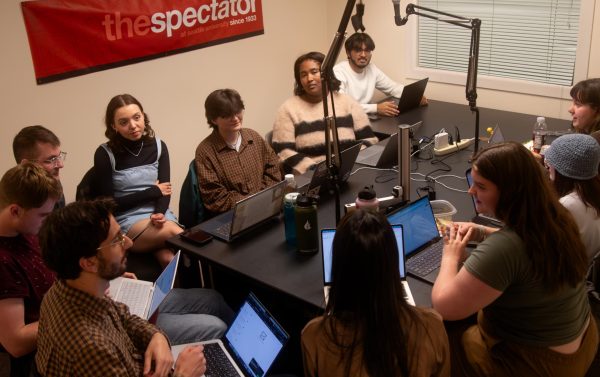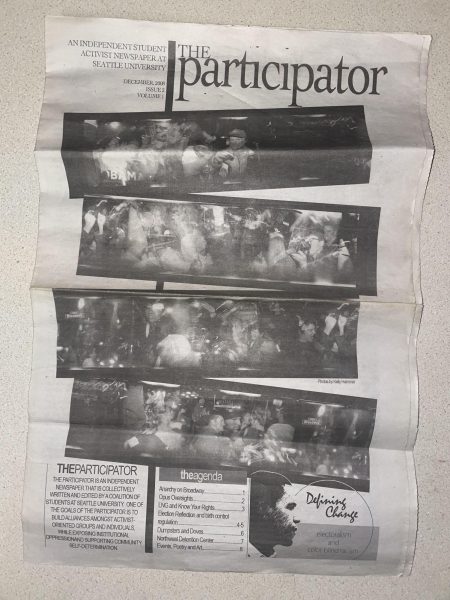Textbook Lending Library Works to Relieve Financial Pressure
Seattle University Campus Ministry’s Textbook Lending Library is in many ways a mystery. Hidden in the recesses of the Seattle U website, the page for the Lending Library advertises “195 texts available in a variety of subjects.”
Currently, students are not donating their books, and the library is not growing. Of the copies which they do have, all 195 are the product of a large donation, or more aptly, transfer, from Disability Services.
Annarose Jowenson, the campus minister for social justice and current head of the Lending Library, has been at Seattle U since August 2022. She is also in charge of the Commencement Closet (which lends out graduation regalia) and spring break immersion experiences.
“[The Lending Library] is something that, in future years, as I continue to stabilize and grow the breadth and depth of my position, I hope to be able to put more energy into,” Jowensen said. “Currently, students can find the whole list of textbooks that we do have online, and if there are certain books they are unsure if we have or not, they can just call me, and we can figure it out.”
In regards to the selection the library has, they have a variety of topics and courses covered. However, at the moment, there is no direct line of communication between the Lending Library and professors. This means that there is no way to communicate what books are being actively taught and used in classes.
Christina Roberts, who has been teaching English at Seattle U since 2007, had never heard of the Lending Library before talking with The Spectator, and was surprised that it exists.
“A lot of my social justice awareness has arisen out of my time at Seattle U. I think it would be wonderful, if, across campus, we had the time and ability to strengthen inter-campus relationships. Campus Ministry has been a wonderful space in the time I’ve been here, but I know they have also gone through staff transitions, so sometimes it’s about maintaining the momentum of those relationships,” Roberts said.
For Roberts, there is a conscious decision that goes into choosing the texts for her classes, both in regard to their content and price.
“When I’m approaching what texts I want to use, there is always a consideration of the costs of the books I’m assigning, and I try to keep the total under $100 as the best I can do,” Roberts said.
When it comes to teaching the same course quarter to quarter and year to year, Roberts, like many professors, switches up which books she assigns. There are certain subjects, like philosophy, that can use the same edition of Descartes year after year, but one of Robert’s literature courses is much more fluid.
“There are a variety of different reasons. I find myself looking for shorter works… hoping to change the class thematically… or try and give students the opportunity to interact with texts which they might not typically read,” Roberts said.
Keenan Demarsico, a third-year English major, works 32 hours a week and chooses to be particularly thoughtful when it comes to his textbook buying.
“This quarter, luckily, I’ve only had to buy textbooks for two of my courses. This is something I do in every class: I space out when I’m buying my books, so I don’t have to buy them all at once, and it’s saved me before. Sometimes, there are books on the syllabus that we never really get to or don’t end up needing,” Demarsico said.
The Lending Library’s website states that the cost of textbooks is around $1200 dollars a year. Though this varies for students based on their major and the classes they are taking, purchasing textbooks is a major financial burden.
“I think colleges need to move away from profit in so many ways, but, in regards to textbooks, I do feel like there should be a recycling system, especially for UCOR classes,” Demarsco said.
Reminiscent of a system seen in many high schools, where students are given their textbooks by teachers at the beginning of the quarter, Demarsco feels a similar policy should be put in place at SU.
“In certain classes, the school should simply provide students with the textbooks… and have them returned at the end of the quarter,” Demarsco said.
While this may be unrealistic for certain courses, it is nonetheless imperative to have a dialogue around the financial burden placed on students when it comes to textbooks. As it is now, the Lending Library continues to be hardly used and stagnant in growth, and a potentially valuable resource is wasted. If you have left over textbooks, look into where they might go to use. The Lending Library is the perfect place to start.











